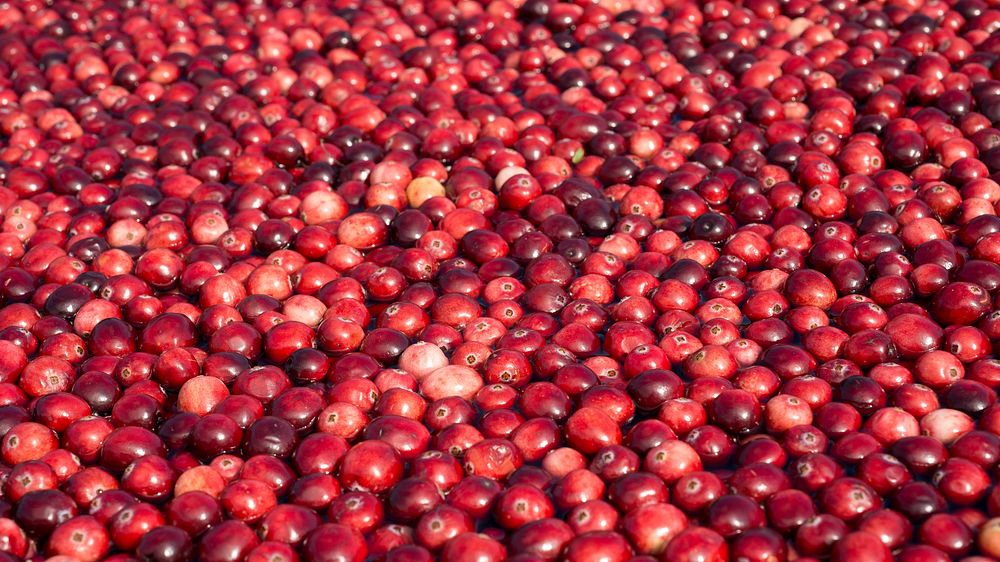
The U.S. Department of Agriculture (USDA) Farmers Market in partnership with the Ocean Spray agricultural cooperative features cranberries with a constructed mini-bog on Friday, Sept. 17, 2016 in Washington, D.C. The mini-bog demonstrates how water is used as a tool to float berries for a more efficient harvest.
Live cranberry shrubs that came from and will return to a bog for continued use in future demonstrations surround the water. The shrub’s vine has cranberries grown this year, its buds that will become next year’s cranberries.
HOW TO PICK
Contrary to popular belief, cranberries do not grow in water. The cranberry plant is a creeping evergreen shrub or bush that grows in sandy bogs and marshes. It produces berries on long-running vines. The berries first appear as a white creamy color before turning a shiny crimson, signaling they are ready to harvest. There are two common methods for harvesting cranberries, dry and wet. Cranberries that are harvested dry (without water added to the bog) are sold as fresh fruit and only available during the fall and holiday season from September to December. Cranberries harvested wet are picked by flooding the bogs. Because cranberries float, farmers use water to harvest the fruit. Bogs are flooded and a machine is used to loosen the cranberries from the vines. The floating cranberries are then corralled and loaded into waiting trucks for delivery to processing facilities.
HOW TO PREPARE
Simply rinse cranberries thoroughly and use as directed If frozen, there is no need to thaw before using. Sometimes a few white cranberries might be in the bag; they are fine to use. These berries haven't been exposed to as much sunlight as the redder ones. Cranberries are a prized element in the Thanksgiving dinner of most Americans. Use cranberries to make sauces, conserves and preserves, in baked goods, to make juice, or enjoy dried.
HOW TO STORE
These crimson berries can be stored up to four weeks in the refrigerator.
Advice about freezing. To freeze cranberries place in a freezer safe plastic bag without pre-washing. Store for up to one year.
FUN FACTS
• The cranberry is indigenous to North America and was used by Native Americans in both fresh and dried form. Native Americans introduced cranberries to early European settlers.
• The cranberry got its name from early settlers, who nicknamed it the “crane berry” due to the shape of its blooms, which resemble the head of a crane.
OCEAN SPRAY
Founded in 1930, Ocean Spray is the world’s leading producer of cranberry products, but it’s not your typical food company. It’s an agricultural cooperative owned by more than 700 cranberry farmers who receive the profits from every berry sold. The cooperative allows family farms to thrive ensuring economic sustainability for future generations. The average Ocean Spray family farm is just 18 acres. While cranberries are uniquely American, they are exported and enjoyed all over the word. Ocean Spray is focused on international expansion of its products, with the Cooperative’s cranberries featured in more than 1,000 in over 100 countries worldwide.
The USDA Farmers Market Vegucation tent offers informational presentations every Friday between 11:30 AM and 1:00 PM, May to October, in the VegU tent. Short 10-minute classes are free. The market is located on the corner of Independence Ave. and 12th St., SW, in Washington, DC 20250.
For more information visit usda.gov/farmersmarket
@USDA_AMS
#USDAFarmersMkt
#VEGU
USDA multimedia by Lance Cheung. Original public domain image from Flickr